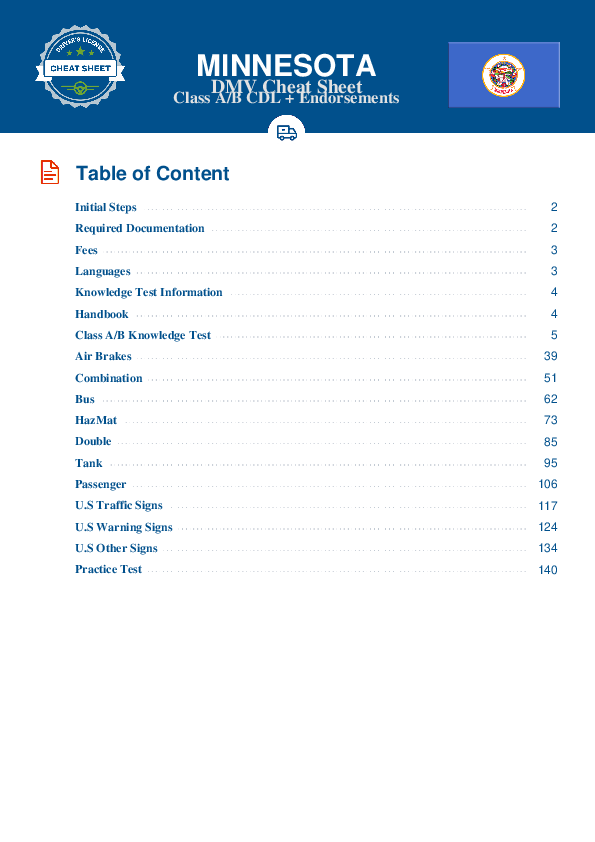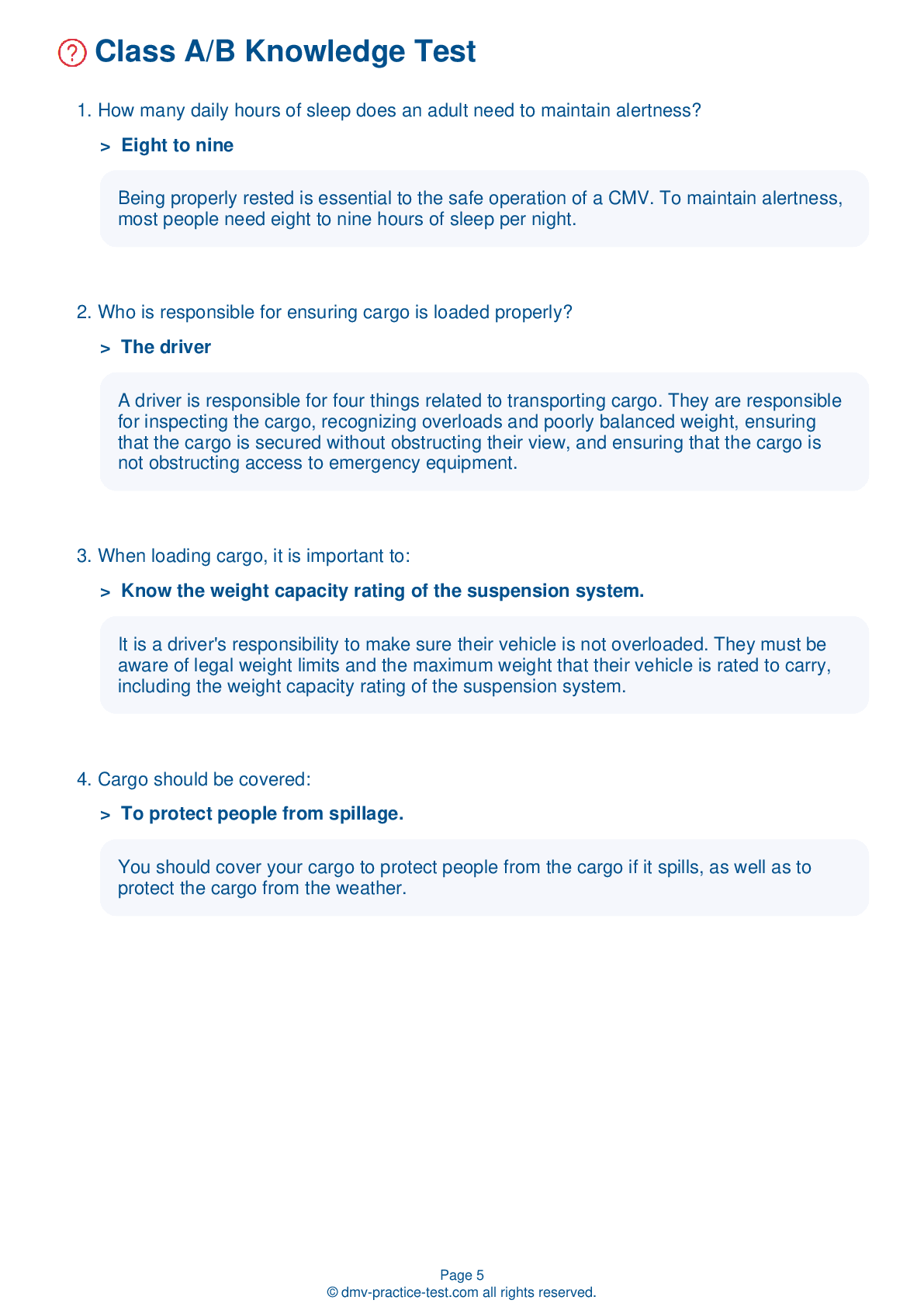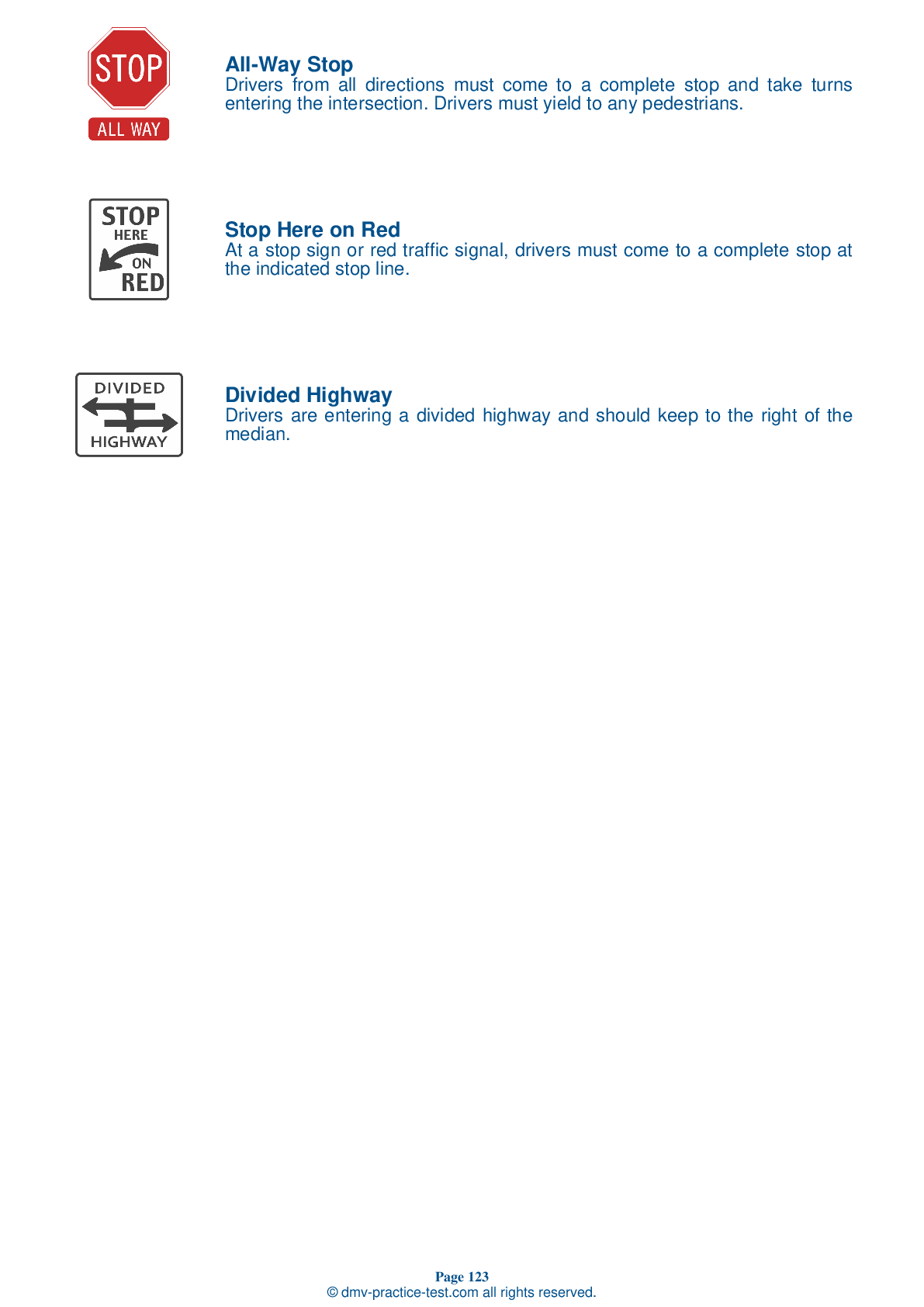Class A Driving Test | Minnesota 2025 #2 Page 7 of 7
Train for FREE online with our Minnesota class A license test. The official exam test consists of several obligatory parts, with all of them checking your knowledge of different blocks of road rules. If you need to obtain a MN CDL class A permit in 2025, practice as much as possible. Free sample tests published on our website will help you check and improve your knowledge and boost your grades. Please bear in mind that CDL class A requirements may vary from state to state.
43 . What should happen before the air pressure in an air brake system tank falls below 55 psi?
The low air pressure warning signal must activate before the air supply pressure drops below 55 psi in the air tank. If the warning signal does not turn on when being tested during an inspection, the vehicle is not safe to drive.
44 . When entering a curve, you should:
Always reduce your speed and downshift before entering a curve.
45 . Before starting down a hill:
To counteract the force of gravity, you should always slow down and shift into a lower gear before starting down a hill.
46 . If coolant has to be added to a system without a recovery tank, you should:
Before adding coolant to a system without a recovery or overflow tank, you must turn the engine off and wait until it cools. Use gloves or a thick cloth to protect your hands. To release the pressure seal, turn the radiator cap slowly to the first stop.
47 . Header boards are used to protect the driver from cargo in the event of a crash.
The function of a front-end header board (also called a "headache rack") is to protect the driver from being injured by moving cargo in the event of a crash or sudden stop.
48 . When approaching a railroad crossing, you should:
You should not rely solely upon the presence of warning signals, gates, or flaggers to alert you to the approach of a train. Be especially alert to approaching trains at crossings that are not controlled by gates or signals. At any railroad crossing, you should operate under the assumption that a train is coming.
49 . Water should be added to the compressed air in an air brake system to improve the effectiveness of the system.
Compressed air in an air brake system usually contains a certain amount of water and compressor oil. The water and oil can damage the brakes if left to accumulate in the system. Tanks must be drained regularly to remove this build-up.
50 . At dawn or dusk, it is helpful to drive with your lights turned on.
At times when visibility is low, you should turn your headlights on to the low beam setting. If you are having a difficult time seeing others, they are probably having a difficult time seeing you.
See the exact questions that will be on the 2025 Minnesota DMV exam.
99.2% of people who use the cheat sheet pass the FIRST TIME
Lillian MCcranie explains how our CDL study guide was helpful in passing the exam and recommends it to everyone.
Cameron tells us how he purchased the CDL exam, and found it to be a useful tool which helped him pass the exam and find a job.



